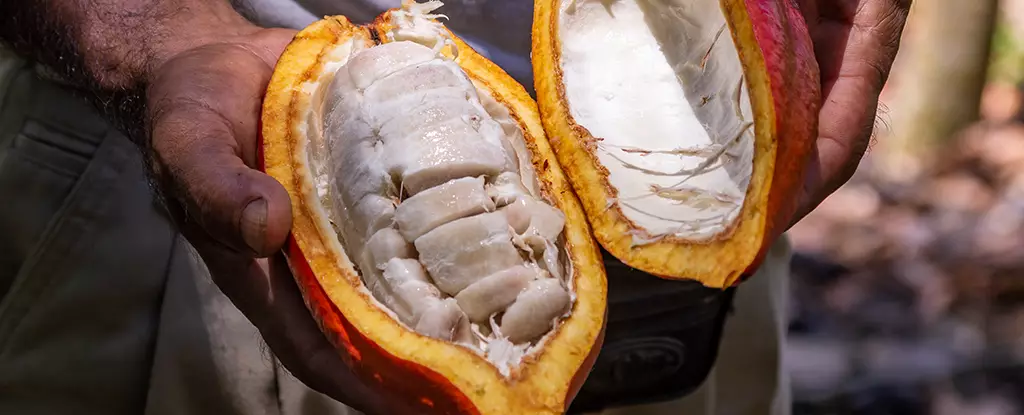The consumption of chocolate in the United States alone exceeds 3 million tons annually. While this sweet treat is beloved for its rich flavor, the reality is that traditional chocolate is loaded with sugar and saturated fats, posing risks to our health. The combination of cacao paste, sugar, and cocoa butter results in a delicious, yet unhealthy, snack that can contribute to diabetes and cardiovascular disease.
Researchers from ETH Zürich in Switzerland have taken on the challenge of reinventing the chocolate recipe to create a healthier alternative. By replacing a portion of refined sugar with a component of the cocoa fruit that is typically discarded, they have managed to develop a new type of chocolate that is lower in sugar and higher in fiber. This innovative approach could potentially transform the way we view and consume chocolate.
Fiber plays a crucial role in maintaining our overall health, particularly in regulating intestinal activity and blood sugar levels. By utilizing the fiber-rich inner wall of the cocoa pod, known as the endocarp, and combining it with juice from the pulp of the cacao seeds, researchers were able to create a sweet gel that could serve as a substitute for the refined carbohydrates found in traditional chocolate recipes. This not only enhances the flavor of the chocolate but also provides a healthier alternative for consumers.
The resulting whole-fruit chocolate contains a higher amount of fiber compared to conventional chocolate blocks, offering equivalent sweetness without the excessive sugar content. In taste tests conducted with volunteers, it was found that a product containing 20% ‘whole fruit gel’ was as sweet as chocolate with only 5 to 10% powdered sugar. This innovation has the potential to revolutionize the chocolate industry and provide consumers with a healthier option.
While the development of this new chocolate recipe shows promise, there are challenges that need to be addressed before it can reach consumers. The entire value chain, from cocoa farmers to production facilities, will need to be adapted to accommodate this novel product. However, the potential benefits of introducing a low-sugar, high-fiber chocolate alternative to the market could provide an added revenue stream for cacao farmers and appeal to health-conscious consumers.
The future of chocolate looks promising with the introduction of a healthier alternative that prioritizes fiber and reduces sugar content. By reimagining traditional chocolate recipes and utilizing components of the cocoa fruit that are often overlooked, researchers have opened the door to a new era of chocolate production that aligns with current health trends. As demand for healthier food options continues to grow, the introduction of whole-fruit chocolate could be a game-changer for the industry.



Leave a Reply